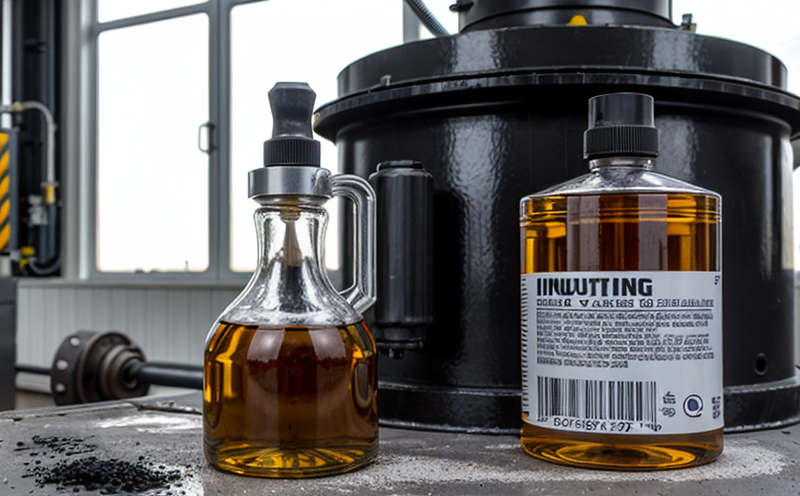EN ISO 3104 Viscosity Testing of Oils
The EN ISO 3104 standard is a cornerstone in the field of industrial oil and additive testing, specifically targeting the viscosity measurement of oils. This critical test ensures that lubricants meet stringent performance requirements and comply with industry standards, thereby enhancing machinery reliability and longevity.
Viscosity plays a pivotal role in determining an oil’s ability to provide proper lubrication under various conditions. A high viscosity allows for better load-carrying capacity but can also increase friction and heat generation within mechanical components. Conversely, low viscosity results in reduced friction but may not adequately protect against wear and tear during operation.
According to the EN ISO 3104 standard, viscosity is defined as a measure of a fluid's resistance to flow under an applied force. The test involves subjecting the oil sample to shear stress at different temperatures to determine its dynamic viscosity. Temperature plays a crucial role in this process because it affects how freely the molecules can move within the oil.
The testing procedure typically begins with the selection of appropriate viscometers, such as capillary tubes or rotational devices, depending on the type and range of viscosity being measured. Samples are prepared by ensuring they are free from contaminants and representative of the batch to be tested. This preparation is essential for obtaining accurate results.
Once the samples are ready, they undergo heating to reach specified temperatures outlined in the standard. The temperature control is vital as it directly impacts the accuracy of viscosity readings. After reaching the target temperature, a controlled flow rate ensures that the sample passes through the viscometer under consistent conditions.
The results obtained from these tests are then compared against established reference values or specifications to assess compliance with relevant standards like EN ISO 3104:2018. Compliance is crucial for ensuring that lubricants perform optimally across a wide range of operating environments, including high-pressure hydraulic systems and engine crankcases.
Understanding the importance of viscosity testing helps quality managers and R&D engineers make informed decisions about lubricant selection and formulation adjustments. For compliance officers, adherence to this standard ensures that products meet regulatory requirements, enhancing customer satisfaction and brand reputation.
The use of advanced instrumentation like rotational viscometers allows for precise measurement even at extreme temperature conditions, providing reliable data for both laboratory testing and field applications.
Scope and Methodology
The scope of the EN ISO 3104 standard encompasses the viscosity testing of oils using different viscometric methods. This includes both kinematic viscosity (measured in mm²/s at specific temperatures) and dynamic viscosity (measured in Pa·s or cP).
Methodology involves several key steps:
- Selection of the appropriate viscometer based on the viscosity range to be measured.
- Preparation of the oil sample, ensuring it is free from contaminants and representative of the batch.
- Heating the sample to the required temperature according to the standard’s specifications.
- Measuring the flow time or torque required for the sample to pass through the viscometer under controlled conditions.
Industry Applications
- In hydraulic systems, accurate viscosity testing ensures optimal fluid flow and prevents equipment damage due to inadequate lubrication.
- In engine crankcases, proper oil viscosity helps reduce wear on moving parts while maintaining efficient heat dissipation.
- For compressors and pumps, viscosity testing is essential for ensuring energy efficiency and preventing overheating issues.
International Acceptance and Recognition
The EN ISO 3104 standard enjoys widespread acceptance across Europe and beyond. Its use in various industrial sectors ensures that lubricants meet the highest quality standards, thereby enhancing equipment reliability and reducing maintenance costs.
This international recognition is underscored by its alignment with other global standards such as ASTM D445 and ISO 3106, which further validates its applicability across diverse markets. Compliance with EN ISO 3104 is not only a testament to the quality of lubricants but also reflects on the commitment of manufacturers to adhere to stringent testing protocols.





